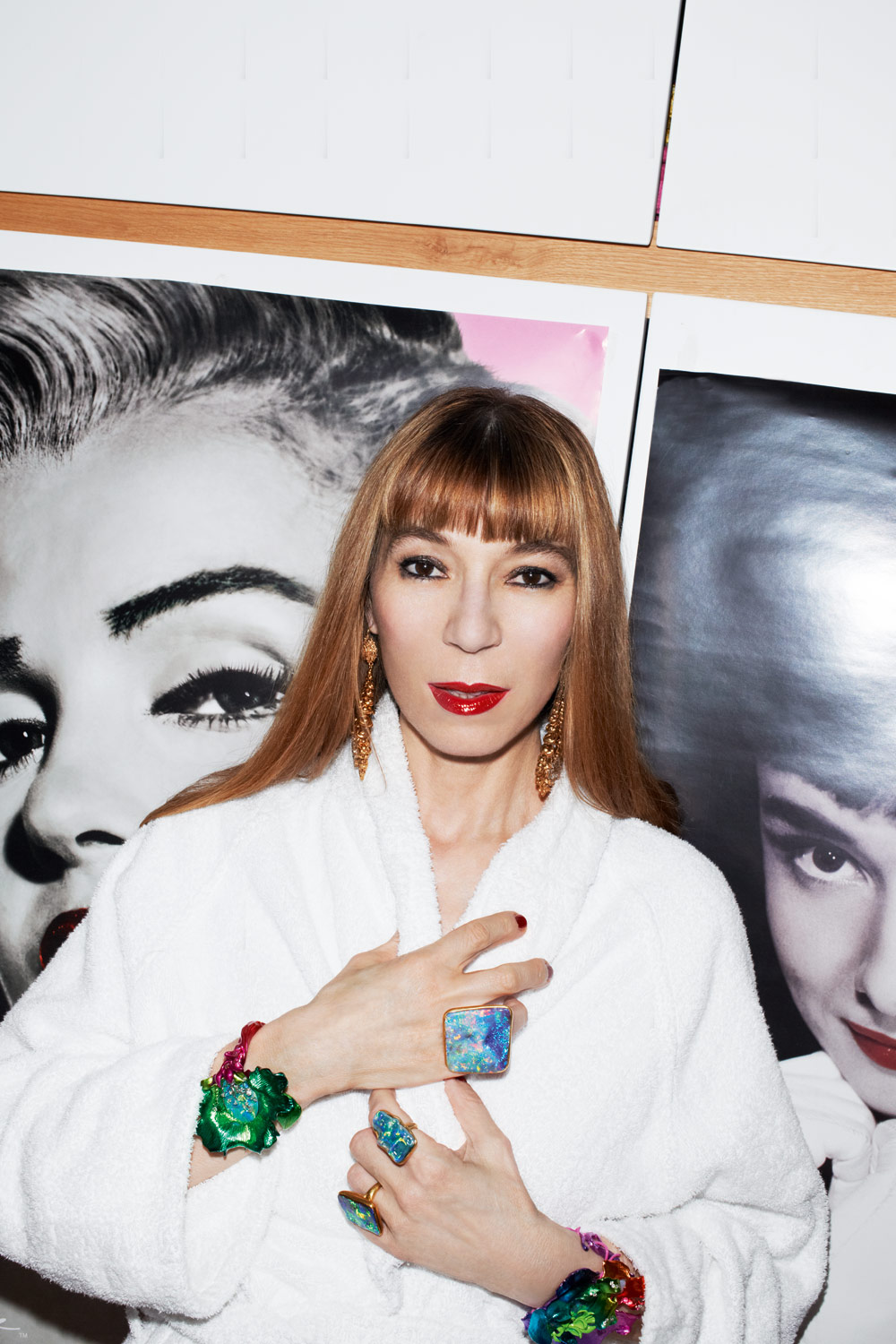Victoire de Castellane
raf’s spirit is precise, but he found dior’s identity in a lighter way.Victoire de Castellane
Dior Fine Jewelry designer Victoire de Castellane is on the balcony of her apartment that overlooks a quiet street in Paris’s 16th arrondissement. Her lips, painted bright red, smile while she speaks quickly into one of those cartoonish telephone receivers attached to her mobile by a curly cord. She’s dressed in a navy Alaïa outfit matched with Balenciaga heels, and there’s a gold cannage cuff on her right arm. Once she’s off the phone, she sits on her Jean-Michel Frank sofa beneath a Thomas Ruff photograph, a supernova of electric neon colors similar to those that de Castellane uses in her jewelry designs. The Paris-born designer is the epitome of urban chic, but she describes the aesthetic of her apartment as “a holiday house.” “In Paris, it’s not so sunny,” she says. “So, when I leave work, it’s like I’m on holiday.”
For de Castellane, finding time for a holiday is difficult as she juggles work on her own eponymous line of one-of-a-kind pieces—last year she had a solo show of organic, iridescent sculptural jewelry at the Gagosian Gallery in Paris—with designing for Dior. Her latest collection for the house, entitled Dear Dior, marks her first foray under the aegis of Dior’s new artistic director, Raf Simons. “It was amazing, intelligent, poetic, with beautiful ideas,” says de Castellane of Simons’s haute couture debut, which occurred on the morning of this interview. “Raf’s spirit is precise, but he found Dior’s identity in a lighter way.”
Dear Dior actually plays with the classic culture of couture. To create the clever appearance of fine jewelry masquerading as costume jewelry, de Castellane set rare stones, like Wollo opals, sphene, and neon blue apatite, in gold lace filigree, a design she riffed from a pattern she found in a 1950s Dior couture sketch. Historically, couturiers used only costume jewels on the runway (fine jewelry was considered a separate business), and de Castellane sought to capture some of that real-versus-replica frisson.
De Castellane never set out to become a jewelry designer. Her career began in 1984, when a friend asked her to help work on costume jewelry for Chanel. But Karl Lagerfeld soon offered her a full-time job. “I said, ‘I don’t want to work, I only want to go out and have fun with my friends,’ ” de Castellane recalls. “I stayed at Chanel for 14 years.” She left, though, in 1998, when LVMH’s Bernard Arnault asked de Castellane to dream up a new world for Dior Fine Jewelry. His proposal was highly inspiring: “to create something from nowhere,” she says. As a result, de Castellane has worked to transform the world of accessories, and occasionally even transcend it, venturing into the realm of contemporary art with her exotic, floral Belladone Island collection for Dior, which was shown at the Musée de l’Orangerie in 2007. She counts Sigmund Freud and Stanley Kubrick among her references, although there is no television or book in sight within her apartment. (Turns out her sometime studio and library is hidden behind a false wooden door, though she jokes, “I can’t read, because I daydream.”)
Along the way, de Castellane’s work has explored psychotropic drugs, carnivorous plants, and fairy-tale princesses. “I’m obsessed with the feminine universe,” she says. To her, jewelry was never meant to broadcast status or wealth, but to act as a protective talisman—a weapon, even. “When you are bored, feeling alone, jewelry protects you,” de Castellane says. “I love all bad vanishing, just the memory of what’s beautiful staying in my mind. Life is not like that. That’s why I do jewelry.”







